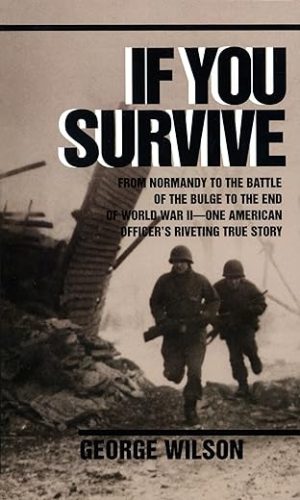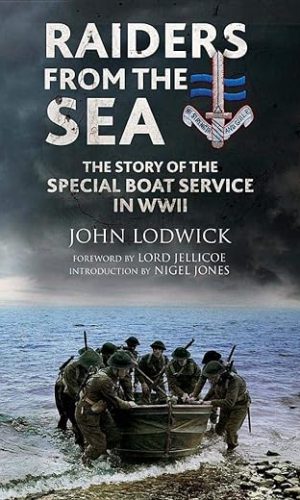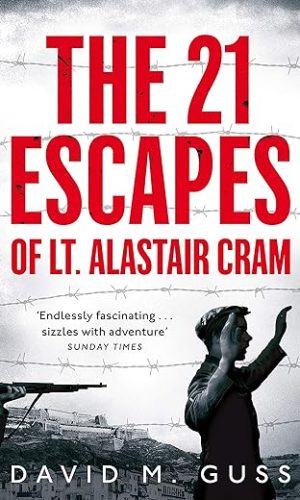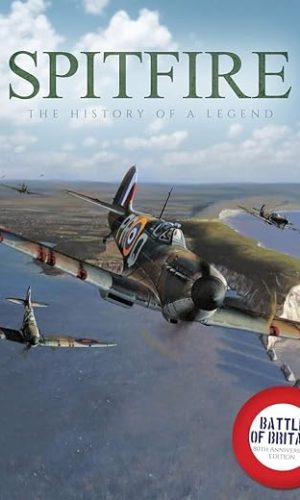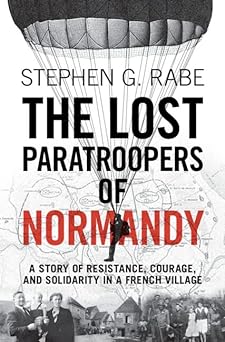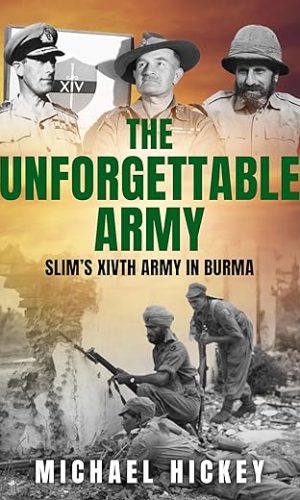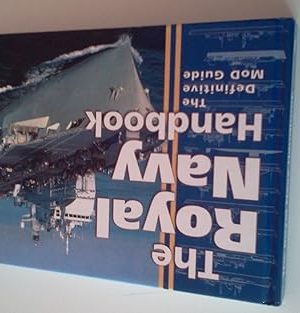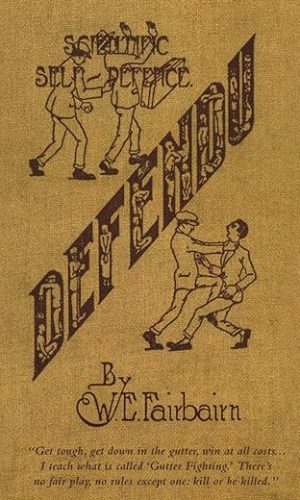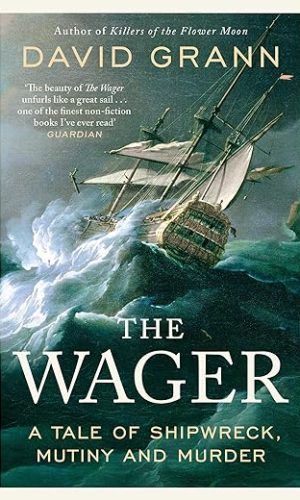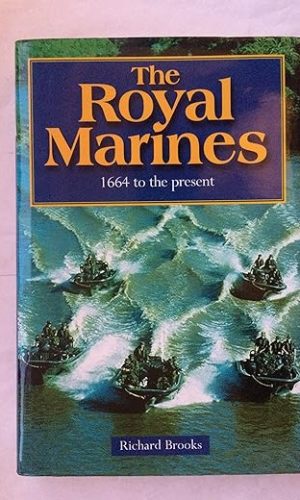Military History
-
TM 9-803 Willys-Overland MB and Ford Model GPW Jeep Technical Manual
Designated as a light truck, the Jeep was the primary four-wheel drive vehicle for the U.S. Army during WWII. The Jeep’s design owed a great deal to Karl Probst, a freelance designer employed by the American Bantam Car Co. Probst’s prototype “Blitz Buggy” was built in a mere 49 days. It clearly impressed the Army in head-to-head competition against a design submitted by Willys-Overland. However the Buggy’s engine failed to meet requirements, and the Army determined that Bantam could not produce the vehicle in quantity. As a result, the Army bought the Bantam design and asked both Willys and Ford to improve it. The Willys model MB, equipped with a L134 straight-4 “Go Devil”engine, was eventually accepted as the standard. Ford models built to Willys specifications were designated GPW (“G” for government vehicle, “P” designating the 80” wheelbase, and “W” indicating the Willys engine design). (Notably, the “GP” part of the designation is often misinterpreted to mean “General Purpose”, and some have suggested this is the reason the vehicle wasnick-named the “Jeep”. In reality it was probably named after a character in the Popeye cartoons). Roughly 640,000 Jeeps were built during WWII by Ford and Willys, and used on every front. Utilitarian, rugged, and easy to maintain, Jeeps saw service as scout cars, ambulances, firefighting vehicles, as tractors for artillery, and more. The vehicle so impressed war correspondent Ernie Pyle that he called it one of the “two most important pieces of non-combat equipment ever developed” — the other being the pocket stove. Jeeps remained in service for the U.S. military in Korea and in the Vietnam War. Created in 1944, this technical manual reveals a great deal about the Jeep’s design and capabilities. Intended as a manual for those charged with operation and maintenance, this manual shows many aspects of its engine, cooling, power, drive train and other systems. Originally labeled restricted, this manual was declassified long ago and is here reprinted in book form. Care has been taken to preserve the integrity of the text.Read more
£11.40 -
Winkle: The Extraordinary Life of Britain’s Greatest Pilot
Pre-order the daring life story and astonishing adventures of Captain Eric ‘Winkle’ Brown – Britain’s greatest-ever pilot.Read more
£10.11£10.99 -
Britain’s War: A New World, 1942-1947
WINNER OF THE TEMPLER MEDAL BOOK PRIZE 2020
A SPECTATOR, FINANCIAL TIMES AND DAILY TELEGRAPH BOOK OF THE YEAR 2020
‘A stunning achievement’ Max Hastings, Sunday Times
Part Two of Daniel Todman’s epic history of the Second World War opens with one of the greatest disasters in British military history – the fall of Singapore in February 1942. Unlike the aftermath of Dunkirk, there was no redeeming narrative available here – Britain had been defeated by a far smaller Japanese force in her grandly proclaimed, invincible Asian ‘fortress’.
The unique skill of Daniel Todman’s history lies in its never losing sight of the inter-connectedness of the British experience. The agony of Singapore, for example, is seen through the eyes of its inhabitants, of its defenders, of Churchill’s Cabinet and of ordinary people at home. Each stage of the war, from the nadir of early 1942 to the great series of victories in 1944-5 and on to Indian independence, is described both as it was understood at the time and in the light of the very latest historical research.
Britain’s War is a triumph of narrative, empathy and research, as gripping in its handling of individual witnesses to the war – those doomed to struggle with bombing, rationing, exhausting work and above all the absence of millions of family members – as of the gigantic military, social, technological and economic forces that swept the conflict along. It is the definitive account of a drama which reshaped our country.
‘I cannot recommend this history highly enough’ Keith Lowe, Literary Review
Read more
£13.60£16.10Britain’s War: A New World, 1942-1947
£13.60£16.10 -
If You Survive (Ivy Books World War II/Nonfiction): From Normandy to the Battle of the Bulge to the End of World War II, One American Officer’s Riveting True Story
“If you survive your first day, I’ll promote you.”So promised George Wilson’s World War II commanding officer in the hedgerows of Normandy — and it was to be a promise dramatically fulfilled. From July, 1944, to the closing days of the war, from the first penetration of the Siegfried Line to the Nazis’ last desperate charge in the Battle of the Bulge, Wilson fought in the thickest of the action, helping take the small towns of northern France and Belgium building by building.
Of all the men and officers who started out in Company F of the 4th Infantry Division with him, Wilson was the only one who finished. In the end, he felt not like a conqueror or a victor, but an exhausted survivor, left with nothing but his life — and his emotions.
If You Survive
One of the great first-person accounts of the making of a combat veteran, in the last, most violent months of World War II.
Read more
£6.50£7.10 -
D-Day Through German Eyes: How the Wehrmacht Lost France
Everyone is familiar with the story of D-Day and the triumphal liberation of France by the Allies: a barbaric enemy was defeated by Allied ingenuity, courage and overwhelming military force, helped by dreadful German command errors and the terrible state of Wehrmacht forces in the West – but is this all true? The Wehrmacht was hugely experienced, equipped with some of the best weaponry of the war and was holding its own in Italy and Russia at the time. Berlin knew the invasion was coming and had had years to prepare for it. So how did the Germans view the impending invasion and campaign, did they feel ready, what forces did they have and could they have done better? Previous histories have focused on the ‘clash of the generals’; the battle between von Runstedt and Eisenhower, Montgomery and Rommel, but on the German side in particular this was a battle that would be fought by divisional and regimental commanders; the ‘German D-Day colonels’ upon whom the real business of trying to defeat the invasion fell – it was they and their men, outnumbered and outgunned, who somehow held Normandy for ten whole weeks against the greatest seaborne invasion force ever assembled, and occasionally even came close to defeating it. In the end they lost, and the majority of these unsung leaders ended up killed, wounded or captured in the fighting. As for their men, they ranged from élite Waffen-SS stormtroopers through to bewildered teenagers, old men, ‘recycled’ invalids and even anti-communist Eastern legions. Written from the ‘other side’ and told through the words of the veterans, this book is a revelation.Read more
£8.70£9.50 -
The Battle of the Beams: The secret science of radar that turned the tide of the Second World War
‘Deeply researched and engagingly written’ The Times
‘Has the pace and style of a well-crafted thriller’ Mail on Sunday
‘Chock full of memorable characters and written with all the drama and pace of a Robert Harris thriller’ Rowland White, author of Harrier 809The radio war of 1939-45 is one of the great scientific battles in history.
This is the story of that war.Relying on first-hand accounts as well as papers recently released by the Admiralty, The Battle of the Beams fills a huge missing piece in the canon of WW2 literature.
It combines history, science, derring do and dogged determination and will appeal as much to fans of WW2 history as to those fascinated by the science behind the beams that changed our lives.
The British believed that, through ingenuity and scientific prowess, they alone have a war-winning weapon: radar. They are wrong. The Germans have it too.
They believe that their unique maritime history means their pilots have no need of navigational aids. Flying above the clouds they, like the seafarers of old, had the stars to guide them, and that is all that is required. They are wrong. Most of the bombs the RAF will drop in the first years of the war land miles from their target.
They also believe that the Germans, without the same naval tradition, will never be able to find targets at night. They are, again, wrong. In 1939 the Germans don’t just have radar to spot planes entering their airspace, they have radio beams to guide their own planes into enemy airspace.
Luckily there was one young engineer, Reginald Jones, helping the British government with their own scientific developments. In June 1940, when Jones quietly explained the beams the Germans had devised to a room full of disbelieving sceptics, Churchill later described the moment as like sitting in the parlour while Sherlock Holmes finally reveals the killer. Churchill immediately supported Jones’s efforts to develop radar technology that went on to help the Allies win the war.
Read more
£15.20£19.00 -
No More Secrets: My part in codebreaking at Bletchley Park and the Pentagon
‘Engaging’ Daily Telegraph
The true and extraordinary story of one of the last surviving women to have worked in codebreaking at both Bletchley Park and the Pentagon.
Born one hundred years ago, Betty Webb MBE, LOH (Legion of Honour) has had a ringside seat to history. After graduating from school, she faced the usual limited opportunities for employment on offer to women at the time. However, with the war in full swing, fate intervened and in 1941, wanting to play her part in the war effort, Betty joined the Auxiliary Territorial Service (Women’s Army).
After being interviewed by an intelligence officer, she found herself at Euston station with her kit-bag, a travel warrant in her pocket and instructions to get off the train at Bletchley Park.
Between 1941 and 1945 Betty played a vital role in the top-secret efforts being made to decipher the secret communications of the Germans and later the Japanese. In 1945, as other members of the forces returned home from the war in Europe, she was sent to the Pentagon and was in Washington DC when the atomic bombs fell and when Eisenhower announced the end of the war.
Betty was unable to reveal the true nature of her work, even to her parents, until years later. In this fascinating book, she revisits the key moments of her life and recounts the incredible stories from her time at Bletchley Park.
Read more
£4.80£9.50 -
On a Knife Edge: How Germany Lost the First World War (Cambridge Military Histories)
Was the outcome of the First World War on a knife edge? In this major new account of German wartime politics and strategy Holger Afflerbach argues that the outcome of the war was actually in the balance until relatively late in the war. Using new evidence from diaries, letters and memoirs, he fundamentally revises our understanding of German strategy from the decision to go to war and the failure of the western offensive to the radicalisation of Germany’s war effort under Hindenburg and Ludendorff and the ultimate collapse of the Central Powers. He uncovers the struggles in wartime Germany between supporters of peace and hardliners who wanted to fight to the finish. He suggests that Germany was not nearly as committed to all-out conquest as previous accounts argue. Numerous German peace advances could have offered the opportunity to end the war before it dragged Europe into the abyss.Read more
£19.00£23.80 -
Raiders from the Sea: The Story of the Special Boat Service in WWII
The Special Boat Service was a small force during World War II, never more than about 300 men. But that did not stop it from inflicting great damage on the enemy. In the Mediterranean arena and in the Aegean, which the Germans controlled after the fall of Greece and Crete, this small commando force kept up a constant campaign of harassment, thus pinning down enemy forces and preventing their joining other fronts. They travelled by night to their targets, using submarines, small surface vessels or canoes, with the commanders of the vessels often putting themselves in danger in order to help the men carry out their dangerous and secret missions. They were reliant on the co-operation of the fiercely independent Greeks and in particular the Cretans, all working together in their common objective against the German invaders. John Lodwick took part in the SBS Mediterranean campaign and writes from personal experience with the panache and verve of the squadron itself. For it is more than the story of the remarkable men who made up the force: men such as Anders Lassen, ‘the Dreadful Dane’ who was awarded a posthumous VC, Fitzroy Maclean, Eric Newby, Jock Lapraik, and Lord Jellicoe, who commanded the squadron for almost two years and who contributed a memorable foreword to this memoir. Strong, determined individuals, together the men of the Special Boat Service formed a deadly, cohesive fighting force which contributed much to the war in the Mediterranean and to whom John Lodwick’s book is an excitingly readable tribute.Read more
£11.60£14.20 -
Cold War: For Forty-five Years the World Held its Breath
Cold War is the story of the half-century since the end of the Second World War – the story of our lives. Its framework is the confrontation, military and ideological, between two great powers that dominated the world during these years. It is a story of crises and conflict on a global scale: from the Berlin Blockade and the Cuban Missile Crisis, to the tanks in the streets of Warsaw, Budapest and Prague, to spies, student riots and encounters in space.
In Cold War, Jeremy Isaacs and Taylor Downing record epic history through the detail of individual human experience: the recollections not only of statesmen whose decisions led to these momentous events, but also of the ordinary men and women whose lives were bound up in these years of conflict. Cold War is the first comprehensive history for the general reader to benefit from the recent opening of Soviet, East European and Chinese archives as well as formerly classified American documents. In a driving narrative that it both gripping and informative, the true story of the Cold War can at last be told.Read more
£12.90£14.20 -
The 21 Escapes of Lt Alastair Cram: A Compelling Story of Courage and Endurance in the Second World War
A genuinely new Second World War story, The 21 Escapes of Lt Alastair Cram by David M. Guss is a riveting account of the wartime exploits of the Scotsman. It is a tale of courage in the face of extraordinary odds and a testament to one man’s dogged determination never to give up.
‘The greatest serial escaper of the Second World War’ – The Times
‘Endlessly fascinating. Cram’s story sizzles with adventure’ – Giles Milton, Sunday Times
In November 1941 Lt Alastair Cram was taken prisoner in North Africa as a devastating tank battle unfolded as Operation Crusader struggled to relieve Tobruk. His capture began a four year-long odyssey as he passed through twelve different POW camps, three Gestapo prisons and one asylum. Determined to regain his freedom, he became a serial escapee fleeing his captors no fewer than twenty-one times.
The most dramatic of these attempts was from Gavi, the ‘Italian Colditz’. This maximum-security prison built inside a thousand year old stone fortress was for the pericolosi, those classified as the ‘most dangerous’ prisoners due to their unrelenting desire to escape. It was here that Alastair met David Stirling, the legendary founder of the SAS, and cooked up the plan for the ‘Cistern Tunnel’, one of the most audacious but little-known mass escape attempts of the entire war.
______________‘Fascinating’ – Daily Express
‘An enthralling portrait of true courage’ Sunday Express S Magazine
Read more
£8.70£9.50 -
Burma ’44: The Battle That Turned Britain’s War in the East
‘A thrilling blow-by-blow account’ The Times
‘A first-rate popular history of a fascinating and neglected battle… a veritable page-turner’ BBC HistoryIn February 1944, a rag-tag collection of clerks, drivers, doctors, muleteers, and other base troops, stiffened by a few dogged Yorkshiremen and a handful of tank crews managed to hold out against some of the finest infantry in the Japanese Army, and then defeat them in what was one of the most astonishing battles of the Second World War.
What became know as The Defence of the Admin Box, fought amongst the paddy fields and jungle of Northern Arakan over a fifteen-day period, turned the battle for Burma. Not only was it the first decisive victory for British troops against the Japanese, more significantly, it demonstrated how the Japanese could be defeated. The lessons learned in this tiny and otherwise insignificant corner of the Far East, set up the campaign in Burma that would follow, as General Slim’s Fourteenth Army finally turned defeat into victory.
Burma ’44 is a tale of incredible drama. As gripping as the story of Rorke’s drift, as momentous as the battle for the Ardennes, the Admin Box was a triumph of human grit and heroism and remains one of the most significant yet undervalued conflicts of World War Two.
The new, sweeping World War II book from James Holland, THE SAVAGE STORM, is available for pre-order now.
Read more
£7.30£10.40 -
Spitfire The History Of A Legend
THE 80TH ANNIVERSARY OF THE BATTLE OF BRITAIN The Supermarine Spitfire was developed by R.J. Mitchell and his team for just one reason to intercept and shoot down enemy bombers from British skies. Lauded by the Chairman of Vickers as a real killer fighter , the Spitfire was so advanced that it proved a huge challenge to the British aviation industry. The project ran so late that it only began to arrive in significant numbers even as the Battle of Britain was beginning. It was during the Battle of Britain in 1940 that the Spitfire became an enduring legend and a symbol of the British fighting spirit, partnering with the Hawker Hurricane to defeat the might of Hitler s Luftwaffe and prevent invasion. From 1942-3 onwards, it would range and fight around the world, from Malta and North Africa to Soviet Russia and Burma, often taking on new roles like ground attack and bomber escort for which it had never been designed. Profusely illustrated with the pick of historic photographs, Spitfire The History of a Legend covers all the significant Marks developed during the Spitfire s operational service, explaining how the aircraft evolved to meet the challenges presented by the war s changing requirements and by the threat of new generations of Luftwaffe fighters. It also includes coverage of fascinating Spitfire variants including the Seafire, Seafang and Spiteful.Read more
£10.80£19.00Spitfire The History Of A Legend
£10.80£19.00 -
The Future of War: A History
For as long as there have been wars there have been fears about the next war. Where are the new dangers? What is the best defence? How might peace come about? This is the history of how over the last 150 years we have tried – rightly and wrongly – to predict war’s future.
‘Britain’s leading academic strategist … read this book’ Economist
‘Insightful and opinionated … expertly covers centuries of evolving mayhem’ Gary J. Bass, The New York Times
‘A bonfire of predictions … Freedman’s purpose in this wise book is to discern patterns in the way we have thought about war’s future’ Shashank Joshi, Financial Times
‘It reflects the author’s immense knowledge and wisdom. It should feed our humility, because it reminds us of mankind’s unlimited capacity for folly’ Max Hastings, The Times
Read more
£9.60£10.40The Future of War: A History
£9.60£10.40 -
Fred Dibnah’s Victorian Heroes
Fred Dibnah was a man born out of his time. His era should have been the ‘magnificent age of British engineering’ – the nineteenth century – and his heroes were the great industrial engineers of the period whose prolific innovations and dedicated work ethic inspired a national mood of optimism and captured the hearts of the British public.
Fred Dibnah’s Victorian Heroes tells the stories of some of these men – including George and Robert Stephenson, Isambard Kingdom Brunel and Joseph Whitworth – and what it was that made them such inspirational figures to Fred. What were their backgrounds? Where did their drive and vision come from? What sort of people were they at work and at home? And what was their contribution to the history of industry and engineering?
Most of them – like Fred – were colourful, larger-than-life characters for whom no challenge was too great. Taking these fascinating characters as inspiration, Fred Dibnah’s Victorian Heroes gets to the very heart of what allowed nineteenth-century Britannia to rule the waves . . .
Read more
£5.70 -
German Fighter Aircraft of World War II: 1939-45 (Technical Guides)
Arranged by type, German Fighter Aircraft of World War II offers a highly illustrated guide to the most important fighters used by the Luftwaffe during the conflict. It features such classics as the Messerschmitt Bf 109 and Bf 110, the Heinkel He 100D-1 and the Focke-Wulf Fw 187 and Fw 190, as well as curiosities such as the Arado Ar 68F-1, Henschel Hs 123 and Heinkel He 51B biplanes. Late war innovations, such as the jet and rocket powered Me 262, Me 163 and Heinkel He 162, are also included. Most types are represented in numerous variants and with examples drawn from different theatres of the war. The book includes all the major fighters that served in the invasion of Poland, the defeat of France, the Battle of Britain, Operation Barbarossa, the war in the Mediterranean, the fighting on the Eastern Front and the Defence of the Reich. Each featured profile includes authentic markings and colour schemes, while every separate model is accompanied by detailed specifications. Packed with 110 full-colour artworks, German Fighter Aircraft of World War II is a key reference guide for military modellers and World War II enthusiasts.Read more
£13.00£16.10 -
Gold on Blue: A life in the Royal Marines Band Service
This is the story of a fourteen-year-old boy who joined the Royal Naval School of Music at its wartime camp at Burford in Oxfordshire in the late 1940s. He rose through the ranks to spend 6 ½ years as the professional head of the Royal Marines Band Service, retiring shortly before 11 colleagues were killed at Deal by IRA terrorists.It is the story of a life in music. Of voyages in HMS Sheffield, HMS Hermes, the QE2 and theRoyal Yacht Britannia. A life of duty, honour, ceremony and tradition that includes Queen Elizabeth II’s coronation, the 1966 World Cup Final and the honeymoon cruise of Prince Charles and Diana, Princess of Wales.
This is not a story of one triumph after another. It is the story of someone who, occasionally, was in the right place at the right time. Someone who saw opportunities and embraced them.
Someone who, if he was given the chance, would do it all again.
Read more
£9.50 -
World War Two Military Vehicles: Transport and Halftracks (World War Two)
This title offers a comprehensive illustrated account of the development of military transport during the period from 1939 to 1945. Covering both Allied and Axis equipment, the book is a superbly illustrated and detailed study into an aspect of military history that has often been ignored by researchers and writers who have concentrated solely on the armoured vehicles.
Read more
£2.70 -
The Lost Paratroopers of Normandy: A Story of Resistance, Courage, and Solidarity in a French Village
The fateful days and weeks surrounding 6 June 1944 have been extensively documented in histories of the Second World War, but less attention has been paid to the tremendous impact of these events on the populations nearby. The Lost Paratroopers of Normandy tells the inspiring yet heartbreaking story of ordinary people who did extraordinary things in defense of liberty and freedom. On D-Day, when transport planes dropped paratroopers from the 82nd and 101st Airborne Divisions hopelessly off-target into marshy waters in northwestern France, the 900 villagers of Graignes welcomed them with open arms. These villagers – predominantly women – provided food, gathered intelligence, and navigated the floods to retrieve the paratroopers’ equipment at great risk to themselves. When the attack by German forces on 11 June forced the overwhelmed paratroopers to withdraw, many made it to safety thanks to the help and resistance of the villagers. In this moving book, historian Stephen G. Rabe, son of one of the paratroopers, meticulously documents the forgotten lives of those who participated in this integral part of D-Day history.Read more
£14.30£19.00 -
The Silent Deep: The Royal Navy Submarine Service Since 1945
‘The Ministry of Defence does not comment upon submarine operations’ is the standard response of officialdom to enquiries about the most secretive and mysterious of Britain’s armed forces, the Royal Navy Submarine Service. Written with unprecedented co-operation from the Service itself and privileged access to documents and personnel, The Silent Deep is the first authoritative history of the Submarine Service from the end of the Second World War to the present. It gives the most complete account yet published of the development of Britain’s submarine fleet, its capabilities, its weapons, its infrastructure, its operations and above all – from the testimony of many submariners and the first-hand witness of the authors – what life is like on board for the denizens of the silent deep.
Dramatic episodes are revealed for the first time: how HMS Warspite gathered intelligence against the Soviet Navy’s latest ballistic-missile-carrying submarine in the late 1960s; how HMS Sovereign made what is probably the longest-ever trail of a Soviet (or Russian) submarine in 1978; how HMS Trafalgar followed an exceptionally quiet Soviet ‘Victor III’, probably commanded by a Captain known as ‘the Prince of Darkness’, in 1986. It also includes the first full account of submarine activities during the Falklands War. But it was not all victories: confrontations with Soviet submarines led to collisions, and the extent of losses to UK and NATO submarine technology from Cold War spy scandals are also made more plain here than ever before.
In 1990 the Cold War ended – but not for the Submarine Service. Since June 1969, it has been the last line of national defence, with the awesome responsibility of carrying Britain’s nuclear deterrent. The story from Polaris to Trident – and now ‘Successor’ – is a central theme of the book. In the year that it is published, Russian submarines have once again been detected off the UK’s shores. As Britain comes to decide whether to renew its submarine-carried nuclear deterrent, The Silent Deep provides an essential historical perspective.
Read more
£17.10£19.00 -
The Last of the Windjammers: v. 2
The second volume embraces the period 1888-1928, forty hard years for the Windjammer. Mr. Lubbock’s virile pen draws wonderful word-pictures of the Last Boom in Sail · The Limejuicers of 1888-89 · The Carriers of the Nineties · The Square Riggers of the Twent eth Century, and so on. He has something to say on the Art of Handling Sail, the unique City of Hankow, Monster Sailing Ships, the capsizing of the Lodore and Blairmore, the naming of Masts, Law’s “Shires”, queer rigs, the wonderful Lancing, the Ports of the World, Weir’s “Banks”, Lost Arts of the Seaman, Clink’s Slowcoaches Shire Line, Captains, the “Glens”, German, Argentine, Norwegian, French, Belgian, Finnish and Danish Training Ships, The Reef Topsail Voice, and so on.Read more
£29.70 -
The Unforgettable Army: Slim’s XIVth Army in Burma
A gripping chronicle of the monumental fight against the Japanese in Burma during World War Two.The ideal book for people enthralled by the works of James Holland, Anthony Beevor and Max Hastings.
In mid-December 1941 the Japanese invaded Burma. Within just a few months British forces were driven from their defences and forced to retreat hundreds of miles to the Indian border.
How did the Allies under the leadership of William Slim, Orde Wingate and Louis Mountbatten overcome one of the gravest defeats the British Army ever suffered and drive back the Japanese?
Michael Hickey’s meticulously researched and brilliantly written book charts the course of the Burma campaign, exploring how the British, Asian and African troops fighting under Slim were able to engage and resist the enemy onslaught while simultaneously keeping lines of communication open with China and divert attention from the American attacks in the Pacific.
Despite the fact that it was often referred to as ‘The Forgotten Army’, because its operations were overlooked by the contemporary press and even subsequent historians, Michael Hickey demonstrates just how brilliant and extraordinary this united multi-racial British Fourteenth Army was with soldiers, sailors and airmen from Britain, India, Nepal, Africa, Burma, America, China and many other countries.
‘Michael Hickey, a soldier and a historian in his own right, has been to war and knows what it means. With his sure touch he describes the essential overall picture, while at the same time he deftly targets the significant battles and incidents, bringing the reader close to events as they happened from day to day. His informative book is welcome for the way it highlights the feel and tensions of battle in jungle and scrub plain, together with the personalities of the people involved.’ Field Marshal William Slim
‘captivating tactical-level war stories — useful descriptions of the Japanese soldier and his army, a detailed account of “The ‘Sacking’ of Slim,” and a wonderful “Postlude” describing the post-war fates of key campaign leaders. The Unforgettable Army belongs in the library of anyone interested in miliary leadership and World War II campaigns.’ Col. William Mendel, U.S. Army, Military Review
Read more
£0.90 -
Hitler’s Soldiers: The German Army in the Third Reich
A penetrating study of the German army’s military campaigns, relations with the Nazi regime, and complicity in Nazi crimes across occupied EuropeFor decades after 1945, it was generally believed that the German army, professional and morally decent, had largely stood apart from the SS, Gestapo, and other corps of the Nazi machine. Ben Shepherd draws on a wealth of primary sources and recent scholarship to convey a much darker, more complex picture. For the first time, the German army is examined throughout the Second World War, across all combat theaters and occupied regions, and from multiple perspectives: its battle performance, social composition, relationship with the Nazi state, and involvement in war crimes and military occupation.
This was a true people’s army, drawn from across German society and reflecting that society as it existed under the Nazis. Without the army and its conquests abroad, Shepherd explains, the Nazi regime could not have perpetrated its crimes against Jews, prisoners of war, and civilians in occupied countries. The author examines how the army was complicit in these crimes and why some soldiers, units, and higher commands were more complicit than others. Shepherd also reveals the reasons for the army’s early battlefield successes and its mounting defeats up to 1945, the latter due not only to Allied superiority and Hitler’s mismanagement as commander-in-chief, but also to the failings―moral, political, economic, strategic, and operational―of the army’s own leadership.Read more
£12.30 -
Royal Marines Commandos
The Royal Marines were originally formed under the auspices of the Royal Navy to guard its sailing ships from harm. They are proud of their history and origins but the Navy heritage is fading. John Parker charts how the units have moved away from their nautical beginnings to develop, over time, into the most versatile force in the British military, containing one of their most elite brigades.
The Royal Marines Commandos have, over the past few years, developed into the premier fighting organisation on land, sea and air. This history deals with events associated with the Royal Marines and subsequently in their commando role, starring in all major conflicts including Italy, Malaysia, the Borneo confrontation with Indonesia, and more recently Afghanistan.Read more
£9.20£10.40Royal Marines Commandos
£9.20£10.40 -
ROYAL NAVY HANDBOOK
The ‘Royal Navy Handbook’ provides the only official definitive guide to the structure of the Royal Navy of today and the future. From the Strategic defence forces of the Vanguard class of SSBNs, through the surface and submarine fleet, including the details of proposed new carriers, destroyers and submarines, to maritime airpower and the Rapid Deployment forces, the Royal Marines Commandos, to the vital Support forces of the Royal Fleet Auxiliary, Marine services and shore naval bases, this is the complete work of reference for enthusiasts and professionals alike. Every class of ship, aircraft and vehicle is included with a brief background, complete specifications and a colour illustration. The guide also includes details of the future procurement plans of the Royal Navy, a section on the historic ships of the navy, including HMS Victory and Belfast and a complete list of RN and RFA pennant numbers.Read more
£0.30ROYAL NAVY HANDBOOK
£0.30 -
Ships of the Royal Navy: The Complete Record of all Fighting Ships of the Royal Navy from the 15th Century to the Present FULLY UPDATED AND EXPANDED
This is the fifth fully revised edition of a book first published in 1970. This longevity is testimony to its enduring value as a reference work indeed, Colledge (as it is universally known) is still the first stop for anyone wanting more information on any British warship from the fifteenth century to the present day when only the name is known. Each entry gives concise details of dimensions, armament and service dates, and its alphabetical and chronological arrangement makes it easy to track down the right ship (otherwise the Royal Navy s tradition of re-using the same names can be misleading). This new 5th edition contains some 200 new entries and revisions to many older entries. These reflect the demise of the post-Cold War ships as the Royal Navy was shrunk down as part of the peace dividend, and successive defence reviews saw the loss of significant ships classes such as the Type 42 destroyers, Type 22 frigates and the Illustrious class carriers. It is now being re-equipped in the face of new global challenges and has seen the introduction of the Queen Elizabeth class carriers, the largest ships ever built for the RN; the Type 45 destroyers; and Type 26 frigates and new patrol ships which will take on more global policing roles. Submarines should not be forgotten and the Cold War S class and T class are being replaced by the Astute class submarines, and the deterrent role, presently undertaken by the Vanguard class, is to be carried forward by the Dreadnought class submarines. Also included are the new RFAs which are increasingly taking on frontline operations to release the small number of escorts to more combative roles. In addition, there are updates to the Royal Australian, Canadian and New Zealand navies which have programmes to introduce new destroyers, Arctic patrol vessels, submarines and support ships. Since the death of Jim Colledge, who was widely respected for his pioneering research on the technical details of warships, his magnum opus has been updated, corrected and expanded with similar enthusiasm and attention to detail by Ben Warlow, a retired naval officer and author of a number of books in the field. Some press comments: A unique reference book which is the automatic starting point of research on Royal Navy ships. Lloyd s List This quite invaluable reference tool The Mariner s Mirror The book is absolutely essential in every naval historian s library. Warship WorldRead more
£20.00£23.80 -
London Transport in the Blitz
Up until the twentieth century, wars were fought on the battlefield; it rarely impacted the civilian population. All this changed with the development of aircraft; suddenly there was an additional dimension to warfare. World War 1 saw the first limited raids on urban areas, but it was World War 2 that forced Britains towns and cities onto the front line. While many town and cities suffered severe damage, it was the greater London area that sustained the longest and most damaging onslaught from the early bombing raids of 1940 through to the V1s and V2s of the later years of the war. Central to the viability of the city during the war was London Transport; not only did its Underground stations provide essential additional air raid shelters, but its buses, trains, trams, and trolley buses had to continue to operate throughout the period, despite sustaining vast damage to vehicles and infrastructure. This book tells its fascinating story.Read more
£16.30£19.00London Transport in the Blitz
£16.30£19.00 -
DEFENDU: Scientific Self-Defence
The Fairbairn’s system was based on his training and knowledge in boxing, wrestling, savate, jujutsu, judo and fights he was involved in during his police work, Fairbairn began to develop his own system of hand to hand combat, initially referring it as Defendu. It was designed to be simple to learn and to provide effective results. Fairbairn published his book, Defendu, in 1926[2] (reprinted as Scientific Self Defence in 1931), illustrating this method and it is here that the term Defendu first appeared This confused early readers of the book, who assumed that the techniques within had been based mainly in the Eastern martial arts that Fairbairn had learned. Thus, in an attempt to highlight the originality of Fairbairn’s material, the term did not appear in the 1931 edition of the book. Fairbairn was called upon by the British to help train and riot control. The original Defendu was oriented towards self-defence and Allied troops in World War II. Fairbairn and others expanded on this system to create the Close Quarters Combat system that was then taught to the troops. This system was built on Defendu, but modified for military applications, rather than policerestraint, while the Close Quarters Combat system concentrated on rapid disabling of an opponent, with potentially lethal force. The militarised version of Defendu is described in the military manual All in fighting 1942, used as a supplement during WW2 CQB-training. This book was later published in a civilian edition, missing the chapters on bayonet-fighting and rifle sighting, under the name Get Tough! How To Win In Hand-To-Hand Fighting. As Taught To The British Commandos And The U.S. Armed Forces.Read more
£7.60 -
The Wager
*LONGLISTED FOR THE 2023 BALLIE GIFFORD PRIZE FOR NON-FICTION*‘The beauty of The Wager unfurls like a great sail… one of the finest nonfiction books I’ve ever read’ Guardian
‘The greatest sea story ever told’ Spectator
‘A cracking yarn… Grann’s taste for desperate predicaments finds its fullest expression here’ Observer
THE INSTANT NEW YORK TIMES NO. 1 BESTSELLER
From the international bestselling author of KILLERS OF THE FLOWER MOON and THE LOST CITY OF Z, a mesmerising story of shipwreck, mutiny and murder, culminating in a court martial that reveals a shocking truth.
On 28th January 1742, a ramshackle vessel of patched-together wood and cloth washed up on the coast of Brazil. Inside were thirty emaciated men, barely alive, and they had an extraordinary tale to tell. They were survivors of His Majesty’s ship the Wager, a British vessel that had left England in 1740 on a secret mission during an imperial war with Spain. While chasing a Spanish treasure-filled galleon, the Wager was wrecked on a desolate island off the coast of Patagonia. The crew, marooned for months and facing starvation, built the flimsy craft and sailed for more than a hundred days, traversing 2,500 miles of storm-wracked seas. They were greeted as heroes.
Then, six months later, another, even more decrepit, craft landed on the coast of Chile. This boat contained just three castaways and they had a very different story to tell. The thirty sailors who landed in Brazil were not heroes – they were mutineers. The first group responded with counter-charges of their own, of a tyrannical and murderous captain and his henchmen. While stranded on the island the crew had fallen into anarchy, with warring factions fighting for dominion over the barren wilderness. As accusations of treachery and murder flew, the Admiralty convened a court martial to determine who was telling the truth. The stakes were life-and-death—for whomever the court found guilty could hang.
Read more
£14.30£19.00The Wager
£14.30£19.00 -
Space: A thrilling human history by Britain’s beloved astronaut Tim Peake
*OUT NOW* From bestselling author and British astronaut Tim Peake, an inspirational human history of space travel, from the Apollo missions to our future forays to Mars. The Right Stuff for a new generation.
‘This book is brilliant – once in a blue moon. A book for the whole family.’ Chris Evans, Virgin Radio
‘An extraordinary book. For anyone – even if you’re not interested in Space. If you’re interested in human stories and the human character – this is delightful.’ BBC Breakfast
‘A fascinating, detailed, playful book drawn from extensive research – Peake met seven Apollo astronauts, Russian cosmonauts and various other space technicians – as well as his considerable personal experience. Lifts the lid on what space is like: the dedication and sacrifice; the politics and pantomime; the practicalities and the peril; the glory and fame; the adjustment back to normal life.’ iPaper
‘A thrilling human history of space’ Daily Mirror
‘The bible of space travel’ Chris Moyles, Radio X
As seen in the major TV series Secrets of Our Universe with Tim Peake.
Only 628 people in human history have left Earth. This is their story.
Astronaut Tim Peake traces the lives of the remarkable men and women who have forged the way for humanity beyond Earth, from Yuri Gagarin to Neil Armstrong, from Valentina Tereshkova to Peggy Whitson.
Full of fascinating insight into our greatest pioneers and unsung heroes, and astonishing detail only an astronaut would know, Peake’s book is the first of its kind to chronicle the human evolution of space exploration over sixty years, from our first forays to now. In the process, Peake reveals what spaceflight is really like: the wondrous view of Earth, the surreal weightlessness, the extraordinary danger, the surprising humdrum, the unexpected humour, the new-found perspective, the years of training, the psychological pressures, the gruelling physical toll, the thrill of launch and the trepidation of re-entry.
In the next few years, NASA will send the first woman and the first person of colour to step on the lunar surface. What will separate these upcoming moonwalkers from the legendary Apollo crews? Does it still take a derring-do attitude, super-human fitness, intelligence, plus ‘the right stuff’ – a fabled grace under pressure? And how will astronauts travel even further – to Mars and beyond?
Space: The Human Story reveals all.
‘Space enthusiasts will snap up Peake’s compelling book in their droves, but his account of courage,
camaraderie and the determination to go where few have gone before deserves to be read by a much wider audience too’ – Daily ExpressRead more
£10.50£20.90 -
Space: A thrilling human history by Britain’s beloved astronaut Tim Peake
*OUT NOW* From bestselling author and British astronaut Tim Peake, an inspirational human history of space travel, from the Apollo missions to our future forays to Mars. The Right Stuff for a new generation.
‘This book is brilliant – once in a blue moon. A book for the whole family.’ Chris Evans, Virgin Radio
‘An extraordinary book. For anyone – even if you’re not interested in Space. If you’re interested in human stories and the human character – this is delightful.’ BBC Breakfast
‘A fascinating, detailed, playful book drawn from extensive research – Peake met seven Apollo astronauts, Russian cosmonauts and various other space technicians – as well as his considerable personal experience. Lifts the lid on what space is like: the dedication and sacrifice; the politics and pantomime; the practicalities and the peril; the glory and fame; the adjustment back to normal life.’ iPaper
‘A thrilling human history of space’ Daily Mirror
‘The bible of space travel’ Chris Moyles, Radio X
As seen in the major TV series Secrets of Our Universe with Tim Peake.
Only 628 people in human history have left Earth. This is their story.
Astronaut Tim Peake traces the lives of the remarkable men and women who have forged the way for humanity beyond Earth, from Yuri Gagarin to Neil Armstrong, from Valentina Tereshkova to Peggy Whitson.
Full of fascinating insight into our greatest pioneers and unsung heroes, and astonishing detail only an astronaut would know, Peake’s book is the first of its kind to chronicle the human evolution of space exploration over sixty years, from our first forays to now. In the process, Peake reveals what spaceflight is really like: the wondrous view of Earth, the surreal weightlessness, the extraordinary danger, the surprising humdrum, the unexpected humour, the new-found perspective, the years of training, the psychological pressures, the gruelling physical toll, the thrill of launch and the trepidation of re-entry.
In the next few years, NASA will send the first woman and the first person of colour to step on the lunar surface. What will separate these upcoming moonwalkers from the legendary Apollo crews? Does it still take a derring-do attitude, super-human fitness, intelligence, plus ‘the right stuff’ – a fabled grace under pressure? And how will astronauts travel even further – to Mars and beyond?
Space: The Human Story reveals all.
‘Space enthusiasts will snap up Peake’s compelling book in their droves, but his account of courage,
camaraderie and the determination to go where few have gone before deserves to be read by a much wider audience too’ – Daily ExpressRead more
£10.50£20.90 -
Space: A thrilling human history by Britain’s beloved astronaut Tim Peake
*OUT NOW* From bestselling author and British astronaut Tim Peake, an inspirational human history of space travel, from the Apollo missions to our future forays to Mars. The Right Stuff for a new generation.
‘This book is brilliant – once in a blue moon. A book for the whole family.’ Chris Evans, Virgin Radio
‘An extraordinary book. For anyone – even if you’re not interested in Space. If you’re interested in human stories and the human character – this is delightful.’ BBC Breakfast
‘A fascinating, detailed, playful book drawn from extensive research – Peake met seven Apollo astronauts, Russian cosmonauts and various other space technicians – as well as his considerable personal experience. Lifts the lid on what space is like: the dedication and sacrifice; the politics and pantomime; the practicalities and the peril; the glory and fame; the adjustment back to normal life.’ iPaper
‘A thrilling human history of space’ Daily Mirror
‘The bible of space travel’ Chris Moyles, Radio X
As seen in the major TV series Secrets of Our Universe with Tim Peake.
Only 628 people in human history have left Earth. This is their story.
Astronaut Tim Peake traces the lives of the remarkable men and women who have forged the way for humanity beyond Earth, from Yuri Gagarin to Neil Armstrong, from Valentina Tereshkova to Peggy Whitson.
Full of fascinating insight into our greatest pioneers and unsung heroes, and astonishing detail only an astronaut would know, Peake’s book is the first of its kind to chronicle the human evolution of space exploration over sixty years, from our first forays to now. In the process, Peake reveals what spaceflight is really like: the wondrous view of Earth, the surreal weightlessness, the extraordinary danger, the surprising humdrum, the unexpected humour, the new-found perspective, the years of training, the psychological pressures, the gruelling physical toll, the thrill of launch and the trepidation of re-entry.
In the next few years, NASA will send the first woman and the first person of colour to step on the lunar surface. What will separate these upcoming moonwalkers from the legendary Apollo crews? Does it still take a derring-do attitude, super-human fitness, intelligence, plus ‘the right stuff’ – a fabled grace under pressure? And how will astronauts travel even further – to Mars and beyond?
Space: The Human Story reveals all.
‘Space enthusiasts will snap up Peake’s compelling book in their droves, but his account of courage,
camaraderie and the determination to go where few have gone before deserves to be read by a much wider audience too’ – Daily ExpressRead more
£9.99 -
The Wager
‘The beauty of The Wager unfurls like a great sail… one of the finest nonfiction books I’ve ever read’ Guardian‘The greatest sea story ever told’ Spectator
‘A cracking yarn… Grann’s taste for desperate predicaments finds its fullest expression here’ Observer
THE INSTANT NEW YORK TIMES NO. 1 BESTSELLER
From the international bestselling author of KILLERS OF THE FLOWER MOON and THE LOST CITY OF Z, a mesmerising story of shipwreck, mutiny and murder, culminating in a court martial that reveals a shocking truth.
On 28th January 1742, a ramshackle vessel of patched-together wood and cloth washed up on the coast of Brazil. Inside were thirty emaciated men, barely alive, and they had an extraordinary tale to tell. They were survivors of His Majesty’s ship the Wager, a British vessel that had left England in 1740 on a secret mission during an imperial war with Spain. While chasing a Spanish treasure-filled galleon, the Wager was wrecked on a desolate island off the coast of Patagonia. The crew, marooned for months and facing starvation, built the flimsy craft and sailed for more than a hundred days, traversing 2,500 miles of storm-wracked seas. They were greeted as heroes.
Then, six months later, another, even more decrepit, craft landed on the coast of Chile. This boat contained just three castaways and they had a very different story to tell. The thirty sailors who landed in Brazil were not heroes – they were mutineers. The first group responded with counter-charges of their own, of a tyrannical and murderous captain and his henchmen. While stranded on the island the crew had fallen into anarchy, with warring factions fighting for dominion over the barren wilderness. As accusations of treachery and murder flew, the Admiralty convened a court martial to determine who was telling the truth. The stakes were life-and-death—for whomever the court found guilty could hang.
Read more
£9.60£10.40The Wager
£9.60£10.40 -
The Royal Marines: 1664 to the present: History of the Royal Marines 1664-2000
A unique Corps, recruited as soldiers but trained to serve at sea, the Royal Marines are the recognized experts in amphibious warfare, possessors of an invaluable combination of military and naval skills. Despite their ability to survive the most hostile environments, however, the institutional survival of the Royal Marines has often been in doubt. Their curious existence, between land and sea services, has placed them in danger of disbandment by those anxious to cut defence costs. They have survived by their willingness to undertake almost any job – as the first garrison of Australia, ship’s butchers, immaculate naval bandsmen – and do it better than anyone else. Always at the forefront, they trained as fusiliers, with flintlock muskets when other infantry still carried matchlocks. Marines made the first heli-borne assault at Suez in 1956 and in the 1960s switched overnight from jungle warfare to duty in Arctic waters.
This absorbing book, revealing the story behind the Marines’ historical fortitude and gallantry, is published to tie in with the bi-centenary of the service receiving the distinction ‘Royal’, and with the twentieth anniversary of the Falklands War.
Read more
£5.30 -
Faithful Through Hard Times: The uncensored story of WW2 Malta
“This is a moving story played out by every serving soldier when war dislocates families and taxes friendships.” Colonel (retired)Walter Bonnici, RAMC
Four years, 3 million bombs, one small island out-facing the might of the German and Italian air forces – and one young Scotsman who didn’t want to be there. The true story of WW2 Malta from an eye-witness account written at the time in a secret diary, a diary too dangerous to show anyone, and too precious to destroy.
Private George Taylor arrived on Malta in 1940 thinking that shiny buttons would earn him fast promotion; he left four years later, a cynical sergeant and a Master Freemason who never said, ‘I was there, ‘ without a bitter smile. Despite the times he said, ‘It’s me for the next boat’, despite his fears that Nettie had forgotten him, George kept the motto of the Royal Army Medical Corps ‘In arduis fidelis’, ‘faithful through hard times’ and only told his diary the inside story of four long years.
Now, the truth can be told.
‘Based on words and feelings recorded at the time it is probably unique.’ Don Marshall, Military History Enthusiast
www.jeangill.com
Read more
£2.90 -
The Vietnam War: 1956–75 (Essential Histories)
In this fully illustrated introduction, leading Vietnam War historian Dr Andrew Wiest provides a concise overview of America’s most divisive war.America entered the Vietnam War certain of its Cold War doctrines and convinced of its moral mission to save the world from the advance of communism. However, the war was not at all what the United States expected. Dr Andrew Wiest examines how, outnumbered and outgunned, the North Vietnamese and Viet Cong forces resorted to a guerrilla war based on the theories of Mao Zedong of China, while the US responded with firepower and overwhelming force. Drawing on the latest research for this new edition, Wiest examines the brutal and prolonged resultant conflict, and how its consequences would change America forever, leaving the country battered and unsure as it sought to face the challenges of the final acts of the Cold War. As for Vietnam, the conflict would continue long after the US had exited its military adventure in Southeast Asia.
Updated and revised, with full-colour maps and new images throughout, this is an accessible introduction to the most important event of the “American Century.”
Read more
£6.40 -
The Mammoth Book of the Vietnam War (Mammoth Books)
By 1969, following the French defeat at Dien Bien Phu, over 500,000 US troops were ‘in country’ in Vietnam. Before America’s longest war had ended with the fall of Saigon in 1975, 450,000 Vietnamese had died, along with 36,000 Americans. The Vietnam War was the first rock ‘n’ roll war, the first helicopter war with its doctrine of ‘airmobility’, and the first television war; it made napalm and the defoliant Agent Orange infamous, and gave us the New Journalism of Michael Herr and others. It also saw the establishment of the Navy SEALs and Delta Force. At home, America fractured, with the peace movement protesting against the war; at Kent State University, Ohio National Guardsmen fired on unarmed students, killing four and injuring nine.
Lewis’s compelling selection of the best writing to come out of a war covered by some truly outstanding writers, both journalists and combatants, includes an eyewitness account of the first major battle between the US Army and the People’s Army of Vietnam at Ia Drang; a selection of letters home; Nicholas Tomalin’s famous ‘The General Goes Zapping Charlie Cong’; Robert Mason’s ‘R&R’, Studs Terkel’s account of the police breaking up an anti-war protest; John Kifner on the shootings at Kent State; Ron Kovic’s ‘Born on the Fourth of July’; John T. Wheeler’s ‘Khe Sanh: Live in the V Ring’; Pulitzer Prize-winner Seymour Hersh on the massacre at My Lai; Michael Herr’s ‘It Made You Feel Omni’; Viet Cong Truong Nhu Tang’s memoir; naval nurse Maureen Walsh’s memoir, ‘Burning Flesh’; John Pilger on the fall of Saigon; and Tim O’Brien’s ‘If I Die in a Combat Zone’.
Read more
£11.40£12.30The Mammoth Book of the Vietnam War (Mammoth Books)
£11.40£12.30 -
Tank Craft 2: Sherman Tanks British Army and Royal Marines Normandy Campaign 1944
With production in excess of 55,000 the Sherman tank was eventually in service with most Allied armies of the Second World War and by the time of the Normandy landings was the mainstay of Britain’s armoured battalions. In his second book in the TankCraft series, Dennis Oliver uses wartime photos and extensively researched, exquisitely presented colour illustrations to cover the Sherman tanks used by the units of the Royal Armoured Corps and the Royal Marines during the fighting in northern France. As with all the books in the TankCraft series, a large part of this work showcases available model kits and aftermarket products, complemented by a gallery of beautifully constructed and painted models in various scales. Technical details as well as modifications introduced during production and in the field are also explained as is the complex system of markings employed by British armoured regiments. This book will give the modeller all the information and knowledge required to recreate an authentic miniature representation of the tanks that fought from the beaches of Normandy, through the battles for Caen and on to killing fields of Falaise.Read more
£12.60£14.20 -
The Great Arab Conquests: How the Spread of Islam Changed the World We Live In
A popular history of the Arab invasions that carved out an empire from Spain to China
Today’s Arab world was created at breathtaking speed. Whereas the Roman Empire took over 200 years to reach its fullest extent, the Arab armies overran the whole Middle East, North Africa and Spain within a generation. They annihilated the thousand-year-old Persian Empire and reduced the Byzantine Empire to little more than a city-state based around Constantinople. Within a hundred years of the Prophet’s death, Muslim armies destroyed the Visigoth kingdom of Spain, and crossed the Pyrenees to occupy southern France.
This is the first popular English language account of this astonishing remaking of the political and religious map of the world. Hugh Kennedy’s sweeping narrative reveals how the Arab armies conquered almost everything in their path. One of the few academic historians with a genuine talent for story telling, he offers a compelling mix of larger-than-life characters, battles, treachery and the clash of civilizations.
Read more
£12.90£14.20 -
Miss Dior: A Wartime Story of Courage and Couture
Miss Dior is a wartime story of freedom and fascism, beauty and betrayal and ‘a gripping story’ (Antonia Fraser).
‘Exceptional . . . Miss Dior is so much more than a biography. It’s about how necessity can drive people to either terrible deeds or acts of great courage, and how beauty can grow from the worst kinds of horror.’
DAILY TELEGRAPHMiss Dior explores the relationship between the visionary designer Christian Dior and his beloved younger sister Catherine, who inspired his most famous perfume and shaped his vision of femininity. Justine Picardie’s journey takes her to wartime Paris, where Christian honed his couture skills while Catherine dedicated herself to the French Resistance and the battle against the Nazis, until she was captured by the Gestapo and deported to the German concentration camp of Ravensbrück.
Tracing the wartime paths of the Dior siblings leads Picardie deep into other hidden histories, and different forms of resistance and sisterhood. She discovers what it means to believe in beauty and hope, despite our knowledge of darkness and despair, and reveals the timeless solace of the natural world in the aftermath of devastation and destruction.
*A beautiful, full colour package featuring over 200 archival images.*
‘Extraordinary . . . Picardie uses her investigative reporting skills . . . the result is Netflix-worthy and the pace page-turning . . . Catherine’s story shines – the quiet Dior who preferred flowers to fashion, the unsung heroine who survived the abuse of the Third Reich to help liberate France.’
SUNDAY TIMESRead more
£14.60£19.00Miss Dior: A Wartime Story of Courage and Couture
£14.60£19.00




